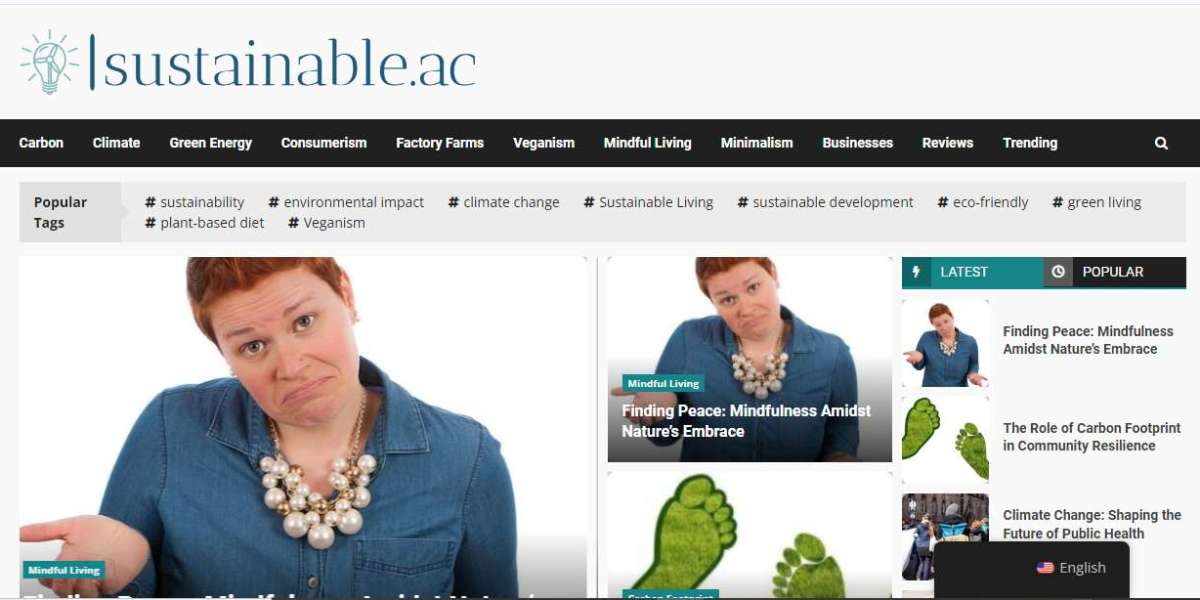Sustainable living is more than just a trend—it’s a conscious lifestyle choice aimed at preserving the Earth’s resources and ensuring a healthier environment for future generations. At the core of sustainable living is a commitment to eco-friendly practices, reducing waste, and supporting systems that have minimal negative impact on the environment.
Green Energy and Renewable Resources
Green energy is an essential part of sustainable living, utilizing resources that are replenishable and do not emit harmful pollutants. Solar, wind, and hydroelectric power are prime examples of renewable energy sources that reduce reliance on fossil fuels, significantly lowering our carbon footprint. This shift towards clean energy is crucial in combating climate change, as it reduces greenhouse gas emissions and promotes energy independence.
Recycling and Conservation
Recycling plays a critical role in waste reduction. By recycling materials like plastic, metal, and paper, we divert waste from landfills, reduce pollution, and conserve natural resources. Conservation efforts extend beyond recycling, encompassing the protection of water, energy, and biodiversity. Responsible water use and conservation are crucial, especially in areas facing water scarcity. Simple actions such as fixing leaks, using water-efficient appliances, and reducing consumption help preserve this precious resource.
Reducing Carbon Footprint
One of the key goals of sustainable living is to minimize one’s carbon footprint, the total amount of greenhouse gases generated by human activities. Transportation, energy consumption, and food production are major contributors to a person's carbon footprint. Transitioning to electric vehicles, using energy-efficient appliances, and adopting plant-based diets are practical ways to lower carbon emissions.
Biodiversity and Wildlife Preservation
Biodiversity—the variety of life on Earth—is essential for maintaining ecosystem balance. Habitat destruction, pollution, and climate change threaten biodiversity, leading to species extinction. Protecting wildlife habitats, especially rainforests and oceans, is a crucial component of preserving biodiversity. Sustainable tourism and wildlife sanctuaries are vital in raising awareness and funds for conservation while providing safe havens for endangered species.
Veganism and Animal Welfare
The rise of veganism is a significant aspect of the sustainable living movement. A plant-based diet reduces the demand for factory farming, which is a major contributor to deforestation, methane emissions, and water pollution. Veganism not only benefits the environment but also supports animal welfare by advocating for cruelty-free practices. Ethical consumption extends to supporting brands that prioritize humane treatment of animals, ethical farming practices, and cruelty-free products.
Zero Waste and Ethical Consumption
Zero waste is a philosophy that encourages redesigning resource life cycles so that all products are reused. This movement encourages consumers to reduce, reuse, and recycle in every aspect of life, from grocery shopping to personal care. Ethical consumption goes hand-in-hand with this by advocating for products that are sustainably produced, fair-trade certified, and environmentally friendly.
Climate Change and Global Warming
Climate change is the defining environmental issue of our time, driven largely by human activities such as burning fossil fuels, deforestation, and industrial processes. Global warming, the long-term heating of the planet, has led to extreme weather events, rising sea levels, and disruptions in ecosystems. Climate action, through policies that limit carbon emissions and promote renewable energy, is critical to mitigating these effects and ensuring a sustainable future.
Ocean Conservation and Marine Life Protection
Oceans cover more than 70% of the Earth's surface, playing a vital role in regulating the climate, providing food, and supporting marine life. However, pollution, overfishing, and climate change threaten marine ecosystems. Ocean conservation efforts focus on reducing plastic pollution, protecting coral reefs, and regulating fishing practices to preserve marine biodiversity.
Sustainable Agriculture and Ethical Farming
Sustainable agriculture involves farming practices that protect the environment, maintain soil fertility, and promote biodiversity. Ethical farming emphasizes animal welfare, reducing the use of harmful chemicals, and adopting practices that promote long-term soil health. Sustainable agriculture also supports local food systems, reduces carbon emissions, and ensures food security for future generations.
Green Technology and Environmental Activism
Green technology innovations, such as electric vehicles, solar panels, and biodegradable materials, are driving the shift toward a more sustainable future. These technologies help reduce pollution and resource consumption while promoting eco-friendly alternatives to traditional methods. Environmental activism plays a vital role in advocating for policy changes, raising awareness about environmental issues, and mobilizing communities to take climate action.
Ethical Fashion and Sustainable Communities
The fashion industry has long been criticized for its environmental impact, but the rise of sustainable fashion offers an alternative. Ethical fashion promotes the use of eco-friendly materials, fair labor practices, and clothing recycling. In addition, sustainable communities focus on creating environments where resources are shared, energy is renewable, and waste is minimized.
Conclusion: A Call for Sustainable Action
Sustainable living requires collective action. From reducing waste and conserving energy to advocating for ethical consumption and wildlife protection, every choice matters. By embracing eco-friendly practices, supporting green energy, and prioritizing biodiversity, we can ensure a future where the Earth and its inhabitants thrive. Whether through small lifestyle changes or larger advocacy efforts, sustainable living is the path to a greener, healthier world.








